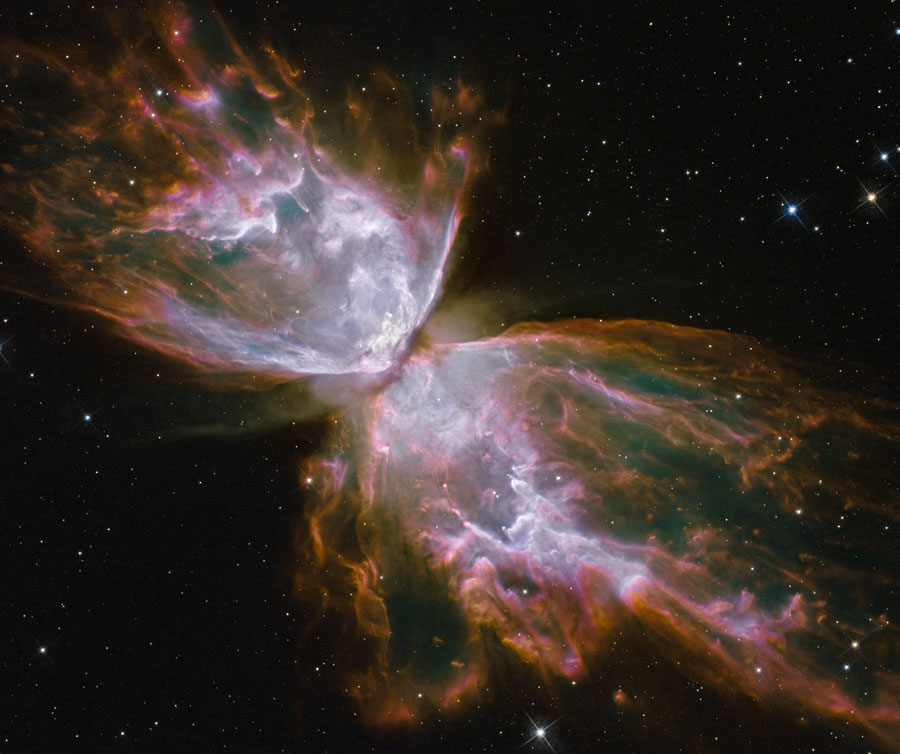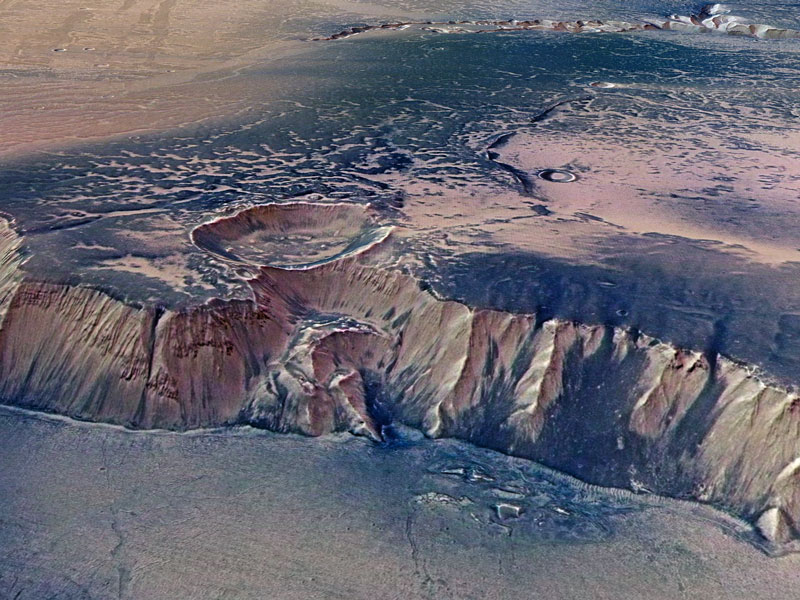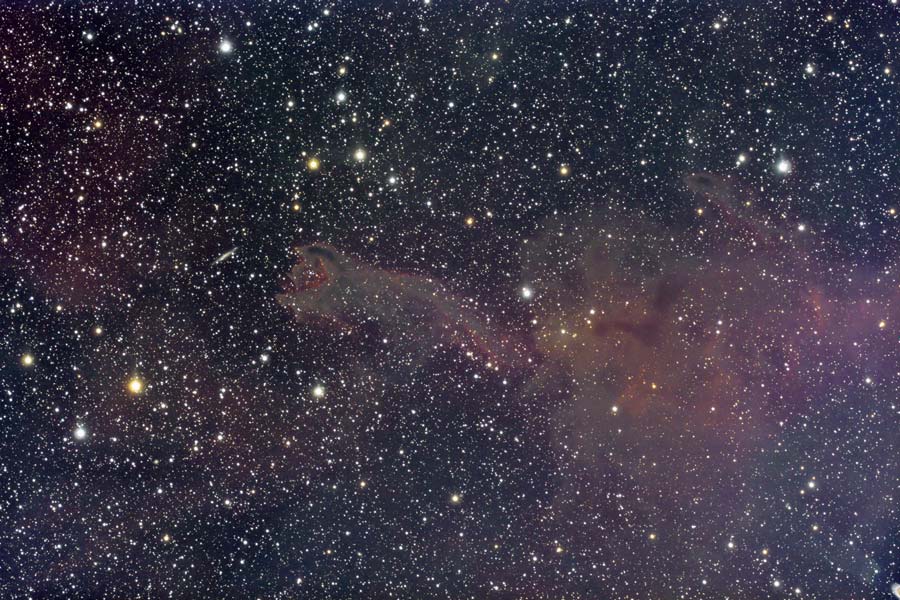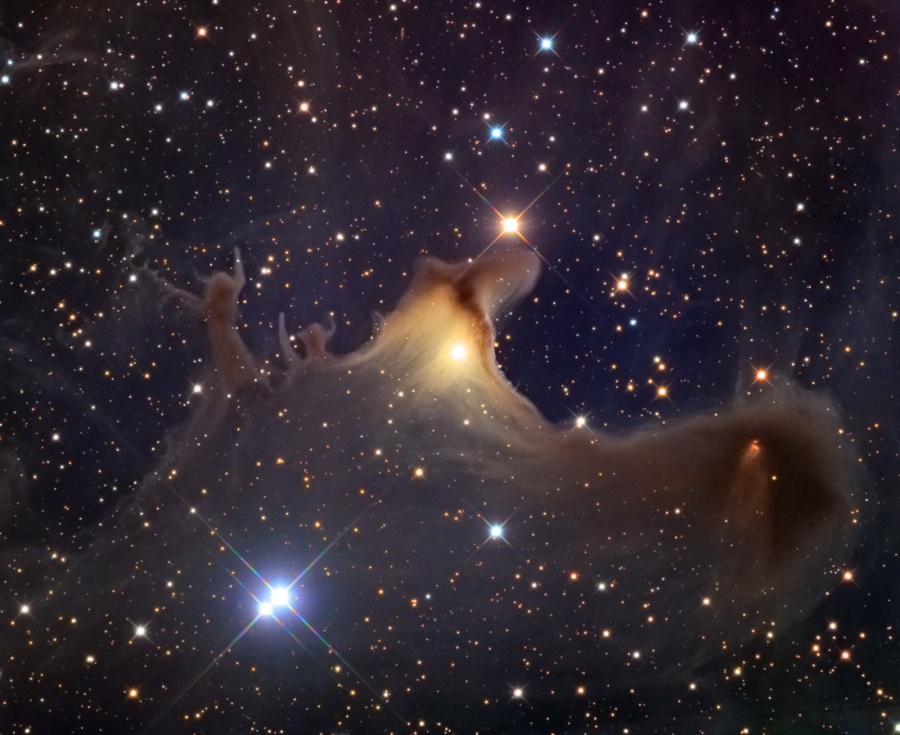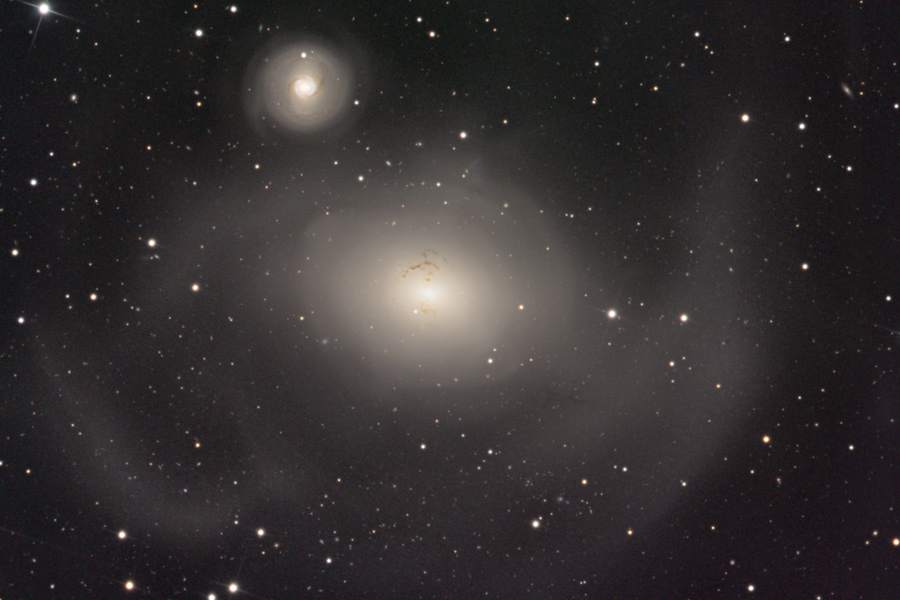Image Credit & Copyright:
Stéphane Guisard (Los Cielos de America), TWAN
This is a picture of a new microwave interferometric telescope . . . obviously in the southern hemisphere; you can tell that by the irregular galaxies pictured along with the telescope array along with the milky way center.

Tuesday, November 29, 2011
Friday, November 18, 2011
youtube for the day/ After the Warming / James burke
I've decided to post this on my blog here finaly because our current civilization is defined by industrialism started around the 1700s. This technologized agriculturalism has a dependence on a finite energy source(human lifetime speaking; over geologic time periods the supply of coal and oil can be replenished). As I've suggested on this blog, knowledge and really technology comes from daming up nature - such as what agriculturalism did by making us have to perform pest control, irrigation, and fertilization. These are finite cuts in the infinit continuity of the universe. So, they lead to problems(mathematical problems defined?); one answer leads to one or more problems and so technological development generally accellerates. Well, the finite energy source dependence of industrialism presents a problem. How to move to another energy source!
One solution is space colonization, which doesn't look like it will happen without some other solution - such as nanomanufacturing, nuclear fusion(preferably over fission). Well, nanotechnology is developing fast; but, honestly, looks like the transition to the nanotechnological era will be rough indeed! Full of cold snaps and heat waves!
----------in a December 17, 2011 update, looks like the effort to meet the five year deadline is too late!(and there was a big conference and major laws passed by the global community to deal with this five year deadline), http://www.nzherald.co.nz/world/news/article.cfm?c_id=2&objectid=10773020
Tuesday, November 15, 2011
and a longer version . . . !
Here's a couple more youtube science that are halfway worth watching. These can be viewed as a celebration of today's announcement of the recent protein engineering breakthroughs being experimentally confirmed. http://www.physorg.com/news/2011-11-creation-largest-human-designed-protein-boosts.html
Well, I should go ahead and show this last one I found recently.
With the molecular simulation software for dna and proteins at least(Eric Drexler wishes for these peptides to get some simulation software as well; maybe so), and all these dna breakthroughs and protein engineering confirmed practical, I'd expect at least soft nanotechnology to make an impact well within this year! From there, some groups will be anxious to bootstrap(using the soft dna/protein nanotechnology) to a more robust nanomanufacturing; and from there hopefully to daimondoid nanomanufacturing. But, i think nanomanufacturing will do plenty of wonders(for good or bad) before even then.
astro picture for the day
NASA Hubble Space Telescope image of a star that will go supernova in a relatively soon time - astronomicaly speaking. Astronomers are actually surprised it didn't blow up over a hundred years ago(well, the light that showed this recent burst still quite visible . . . evidently!). Well, we'll see!
This image is one of Hubble's earliest and still greatest hits!
This image is one of Hubble's earliest and still greatest hits!
Monday, November 14, 2011
Saturday, November 12, 2011
Friday, November 11, 2011
youtube for the day/ Secrets of the Stone Age
Well, this video not available in the Americas is back up on youtube! Here you can see the underground Malta ruins I mentioned way back on this blog! Richard Rudgley also notes some remarkable greenish stones which can only come from the Alps; hence, the Malta builders either traded with those people(the greenish stone looks like a working tool) or they came from there to build Malta. Why? Could they have built Malta on an Island so that others wouldn't destroy their great creation? That's what I would hypothesize. This is also my thought about the Minoan ruins. Now, maybe the Island of Crete had a certain amount of agricultural eventualy. But, maybe they first started out building their maze ruins on Crete to keep their creative artistic effort from being destroyed by others on the mainland. The facts of Malta above gives some strength to my suggestion.
There is much more to say about this video series. Finding the other episodes should be pretty easy. Anyways, in episode 2 or 3, Richard Rudgley talks to somebody who says language might have been started by the use of stones for arithmetic reasons. In my previous blog, I suggested that maybe mathematics helped inspire people to think of agriculturalism. They may have played with plants in geometric patterns and set them in given places. As they came back to these places, they noticed the plants grown where they put them in the ground. I'm forgetting everything I thought of before actually. I'd like to note further here that Morris Kline in his "Mathematics in Western Culture" that mathematics could not have come about from practical reasons of starving for food first. He gives the example that astronomy and the Egyptian mathemtics to do their astronomy could not have been concieved while lost out in sea. They must have come up with the mathematics first which then inspired the astronomy which then inspired navigating in uncharted waters. This may go for agriculturalism as well.
I'd like to further note that the magic language ability seemingling of Human capability only of moving words around like john loves lucy; lucy loves john is a bit of mystery. I had suggested in my previous blog that it might have been mathematics that inspired this language ability. The above conversation of Richard Ridgley with the language origins expert(expert?) suggest likewise as well. Note: i'm not describing everything that needs to be described; to say the least, apply what I and Jacob Bronowski suggest about the nature and origin of mathematical thought in the second to last article of this blog.
Further notes! Remarkably, Richard Rudgley doesn't mention the tally sticks of tens of thousands of years ago(up to thirty thousand years!).
There is much more to say about this video series. Finding the other episodes should be pretty easy. Anyways, in episode 2 or 3, Richard Rudgley talks to somebody who says language might have been started by the use of stones for arithmetic reasons. In my previous blog, I suggested that maybe mathematics helped inspire people to think of agriculturalism. They may have played with plants in geometric patterns and set them in given places. As they came back to these places, they noticed the plants grown where they put them in the ground. I'm forgetting everything I thought of before actually. I'd like to note further here that Morris Kline in his "Mathematics in Western Culture" that mathematics could not have come about from practical reasons of starving for food first. He gives the example that astronomy and the Egyptian mathemtics to do their astronomy could not have been concieved while lost out in sea. They must have come up with the mathematics first which then inspired the astronomy which then inspired navigating in uncharted waters. This may go for agriculturalism as well.
I'd like to further note that the magic language ability seemingling of Human capability only of moving words around like john loves lucy; lucy loves john is a bit of mystery. I had suggested in my previous blog that it might have been mathematics that inspired this language ability. The above conversation of Richard Ridgley with the language origins expert(expert?) suggest likewise as well. Note: i'm not describing everything that needs to be described; to say the least, apply what I and Jacob Bronowski suggest about the nature and origin of mathematical thought in the second to last article of this blog.
Further notes! Remarkably, Richard Rudgley doesn't mention the tally sticks of tens of thousands of years ago(up to thirty thousand years!).
Thursday, November 10, 2011
Wednesday, November 9, 2011
Tuesday, November 8, 2011
astro picture for the day
NASA Hubble Space Telescope
This galaxy is unusual in the gas filaments extending tens of thousands of light years. They're probably kept there by magnetic fields generated by the interaction the central black hole interacting with an entire galactic collision.
This galaxy is unusual in the gas filaments extending tens of thousands of light years. They're probably kept there by magnetic fields generated by the interaction the central black hole interacting with an entire galactic collision.
Monday, November 7, 2011
astro picture for the day
This is from La Palma observatory; it's an Island If I do recall correctly. I think that Queen guitarist turned astrophysicist works there!
This image is remarkably similar to the Eta Carina star from Hubble!(I've yet to post that one on this blog!)
Saturday, November 5, 2011
Friday, November 4, 2011
quote for the day
"Certainly the knowledge that every new thought the individual believes to have created has been prepared for and has long been asleep in time--the wisdom to know that there is nothing new under the sun, as the proverb somewhat coarsely expresses it--this knowledge, I say is not welcome to many very productive brains; for it sets a limit both to self-awareness and to recognition by the environment." - Felix Klein
Thursday, November 3, 2011
Wednesday, November 2, 2011
thought for the day/ parallel processing made reality/theoreticaly and experimentaly
"Modern computer chips handle data at the mind-blowing rate of some 10^13 bits per second. Neurons, by comparison, fire at a rate of around 100 times per second or so. And yet the brain outperforms the best computers in numerous tasks.
One reason for this is way computations take place. In computers, calculations occur in strict pipelines, one at a time.
In the brain, however, many calculations take place at once. Each neuron communicates with up to 1000 other neurons at any one time. And since the brain consists of billions neurons, the potential for parallel calculating is clearly huge.
Computer scientists are well aware of this difference and have tried in many ways to mimic the brain's massively parallel capabilities. But success has been hard to come by.
Today, Anirban Bandyopadhyay at National Institute for Materials Science in Tsukuba, Japan, unveil a promising new approach. At the heart of their experiment is a ring-like molecule called 2,3-dichloro-5,6-dicyano-p-benzoquinone, or DDQ.
This has an unusual property: it can exist in four different conducting states, depending on the location of trapped electrons around the ring. What's more, it's possible to switch the molecule from one to state to another by zapping it with voltages of various different strengths using the tip of a scanning tunnelling microscope. It's even possible to bias the possible states that can form by placing the molecule in an electric field
Place two DDQ molecules next to each other and it's possible to make them connect. In fact, a single DDQ molecule can connect with between 2 and 6 neighbours, depending on its conducting state and theirs. When one molecule changes its state, the change in configuration ripples from one molecule to the next, forming and reforming circuits as it travels.
Given all this, it's not hard to imagine how a layer of DDQ molecules can act like a cellular automaton, with each molecule as a cell in the automaton. Roughly speaking, the rules for flipping cells from one state to another are set by the bias on the molecules and the starting state is programmed by the scanning tunnelling microscope.
And that's exactly what these guys have done. They've laid down 300 DDQ molecules on a gold substrate, setting them up as a cellular automaton. More impressive still, they've then initialised the system so that it "calculates" the way heat diffuses in a conducting medium and the way cancer spreads through tissue.
And since the entire layer is involved in the calculation, this a massively parallel computation using a single layer of organic molecules.
Bandyopadhyay and co say the key feature of this type of calculation is the fact that one DDQ molecule can link to many others, rather like neurons in the brain. "Generalization of this principle would...open up a new vista of emergent computing using an assembly of molecules," they say.
Clearly an intriguing prospect.
Massively Parallel Computing An An Organic Molecular Layer"
--------------------------------------------------------------------------------------------------------------
I can't say that I've posted about every significant science and technological development here on this blog. But, this one is farely significant and generaly doesn't get mentioned even on science news websites.
One reason for this is way computations take place. In computers, calculations occur in strict pipelines, one at a time.
In the brain, however, many calculations take place at once. Each neuron communicates with up to 1000 other neurons at any one time. And since the brain consists of billions neurons, the potential for parallel calculating is clearly huge.
Computer scientists are well aware of this difference and have tried in many ways to mimic the brain's massively parallel capabilities. But success has been hard to come by.
Today, Anirban Bandyopadhyay at National Institute for Materials Science in Tsukuba, Japan, unveil a promising new approach. At the heart of their experiment is a ring-like molecule called 2,3-dichloro-5,6-dicyano-p-benzoquinone, or DDQ.
This has an unusual property: it can exist in four different conducting states, depending on the location of trapped electrons around the ring. What's more, it's possible to switch the molecule from one to state to another by zapping it with voltages of various different strengths using the tip of a scanning tunnelling microscope. It's even possible to bias the possible states that can form by placing the molecule in an electric field
Place two DDQ molecules next to each other and it's possible to make them connect. In fact, a single DDQ molecule can connect with between 2 and 6 neighbours, depending on its conducting state and theirs. When one molecule changes its state, the change in configuration ripples from one molecule to the next, forming and reforming circuits as it travels.
Given all this, it's not hard to imagine how a layer of DDQ molecules can act like a cellular automaton, with each molecule as a cell in the automaton. Roughly speaking, the rules for flipping cells from one state to another are set by the bias on the molecules and the starting state is programmed by the scanning tunnelling microscope.
And that's exactly what these guys have done. They've laid down 300 DDQ molecules on a gold substrate, setting them up as a cellular automaton. More impressive still, they've then initialised the system so that it "calculates" the way heat diffuses in a conducting medium and the way cancer spreads through tissue.
And since the entire layer is involved in the calculation, this a massively parallel computation using a single layer of organic molecules.
Bandyopadhyay and co say the key feature of this type of calculation is the fact that one DDQ molecule can link to many others, rather like neurons in the brain. "Generalization of this principle would...open up a new vista of emergent computing using an assembly of molecules," they say.
Clearly an intriguing prospect.
Massively Parallel Computing An An Organic Molecular Layer"
--------------------------------------------------------------------------------------------------------------
I can't say that I've posted about every significant science and technological development here on this blog. But, this one is farely significant and generaly doesn't get mentioned even on science news websites.
Tuesday, November 1, 2011
youtube for the day/ first general audience nanotech video
This is an alright nanotech video. I find it; then I loose track of it; so, I'm posting it here to keep track of it!
Subscribe to:
Posts (Atom)


